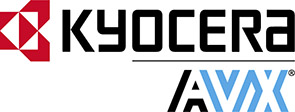Documents techniques
Spécifications
Brand
KYOCERA AVXCapacité
47pF
Tension
200V dc
Boîtier
0805 (2012M)
Type de montage
Montage en surface
Diélectrique
C0G
Tolérance
±5%
Dimensions
2.01 x 1.25 x 1.02mm
Longueur
2.01mm
Profondeur
1.25mm
Hauteur
1.02mm
Série
U
Température d'utilisation maximum
+125°C
Température de fonctionnement minimale
-55°C
Type de cosse
Surface Mount
Détails du produit
AVX ESR très faible série 0805
0805 Range
Nickel barrier terminations covered with a layer of plated Tin (NiSn). Applications include mobile phones, video and tuner designs, COG/NPO is the most popular formulation of the "temperature compensating", EIA Class I ceramic materials, X7R, X5R formulations are called "temperature stable" ceramics and fall into the EIA Class II materials, Y5V, Z5U formulations are for general purpose use in a limited temperature range, EIA Class II materials; these characteristics are ideal for decoupling applications.
€ 1,16
€ 0,232 Each (In a Pack of 5) (hors TVA)
Standard
5
€ 1,16
€ 0,232 Each (In a Pack of 5) (hors TVA)
Les informations sur le stock sont temporairement indisponibles.
Standard
5
Les informations sur le stock sont temporairement indisponibles.
Documents techniques
Spécifications
Brand
KYOCERA AVXCapacité
47pF
Tension
200V dc
Boîtier
0805 (2012M)
Type de montage
Montage en surface
Diélectrique
C0G
Tolérance
±5%
Dimensions
2.01 x 1.25 x 1.02mm
Longueur
2.01mm
Profondeur
1.25mm
Hauteur
1.02mm
Série
U
Température d'utilisation maximum
+125°C
Température de fonctionnement minimale
-55°C
Type de cosse
Surface Mount
Détails du produit
AVX ESR très faible série 0805
0805 Range
Nickel barrier terminations covered with a layer of plated Tin (NiSn). Applications include mobile phones, video and tuner designs, COG/NPO is the most popular formulation of the "temperature compensating", EIA Class I ceramic materials, X7R, X5R formulations are called "temperature stable" ceramics and fall into the EIA Class II materials, Y5V, Z5U formulations are for general purpose use in a limited temperature range, EIA Class II materials; these characteristics are ideal for decoupling applications.
